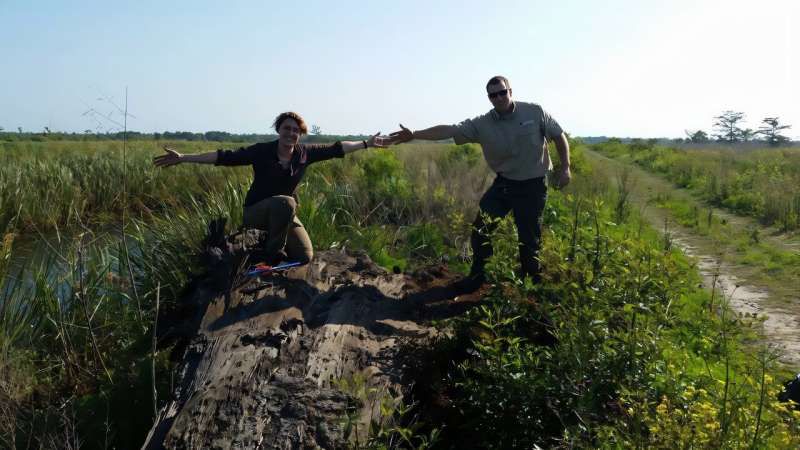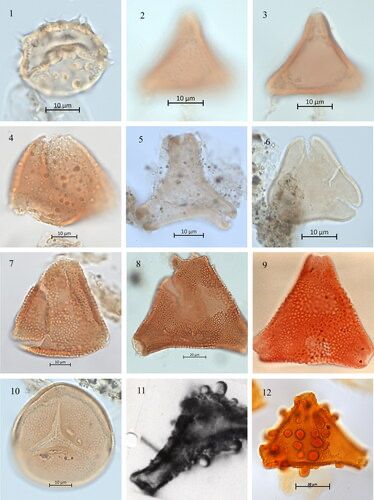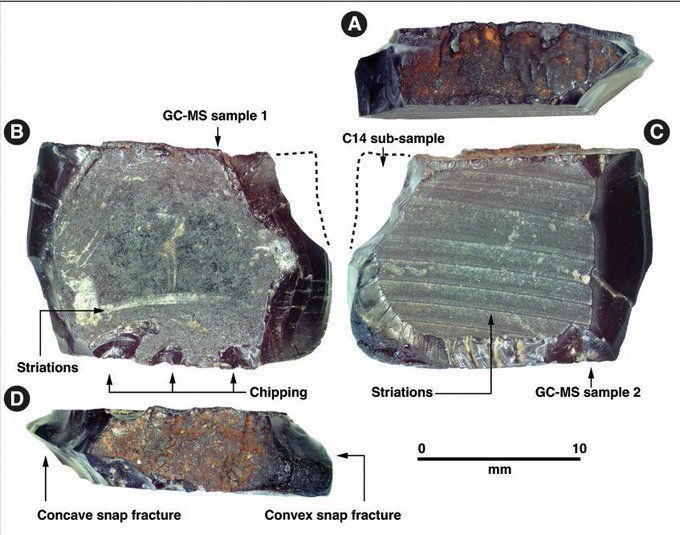

Adeleye, M.A., et al. (2025) Palaeoecological Analyses Reveal Recent Fires Have Destroyed Late-Holocene Peat Deposits in Tasmania's Largest Ramsar Reserve. Austral Ecology, 50: e70087




doi.org/10.1111/aec....

theconversation.com/migrating-bo...
Each spring, billions of Bogong moths migrate up to 1,000 km
They use stellar cues and the Earth’s magnetic field for long-distance nocturnal navigation towards a specific destination.
www.nature.com/articles/s41...




by Neil Pederson — Reposted by: Simon Haberle, Benjamin I. Cook
A paleo study in Georgia suggests that might be a possibility: www.pnas.org/doi/10.1073/...

www.tandfonline.com/doi/full/10....
Fossil pollen from Goat Paddock Crater, Kimberley Plateau, are restricted to the Late Cretaceous Epoch.
=> meteor impact during/before the Mesozoic.



Reposted by: Simon Haberle

Using process-explicit ecological models, the authors show that Moa persistence was not compatible with even low rates of hunting.
www.sciencedirect.com/science/arti...

www.weatherzone.com.au/news/hazy-mo...

Our daily pollen monitoring slide collected on the morning of the 27/5/25 shows the dense brown particles captured over the event. The fine particles of dust can be seen at 400x magnification.


Reposted by: Simon Haberle, Allan D. McDevitt
Topics will encompass all corners of ancient DNA research, from humans to wildlife and sediments🧬🦣💀🦠
Save the dates ✅
Check the website icp2026.palaeogenomics.org and follow us for updates!

by Simon Haberle — Reposted by: John W. Williams
Outreach stretching 16,750km to the southern shores of Long Island (New York, USA)!
spotify.link/aRpInNUeCTb

Reposted by: Simon Haberle

by Catherine J. Frieman — Reposted by: Simon Haberle
🆓 doi.org/10.15184/aqy...

Reposted by: Simon Haberle

The onset of human occupations at Bété I found to be ~150 ka, linking them with Homo sapiens. Plant wax biomarker, stable isotope, phytolith and pollen analyses all point to a wet forest environment.
rdcu.be/ebrSR



Extended and elevated tree pollen seasons in winter and summer are becoming increasingly common in Canberra.

A review of the potential of using magnetic susceptibility to create records of ancient Australian bushfires. Enjoy!
www.publish.csiro.au/WF/WF24093

Reposted by: Simon Haberle

Reposted by: Simon Haberle

One of the reasons may be the onset of She Oak (Casuarina) and Chinese Elm (Ulmus parvifolia) summer pollen season - a very CBR phenomenon.
This year (and last year) we saw a much earlier onset of these allergenic tree pollen in Canberra


The IPPD is a collection of Australian, Southeast Asian, and Oceanian Quaternary pollen records
datascience.codata.org/articles/10....



